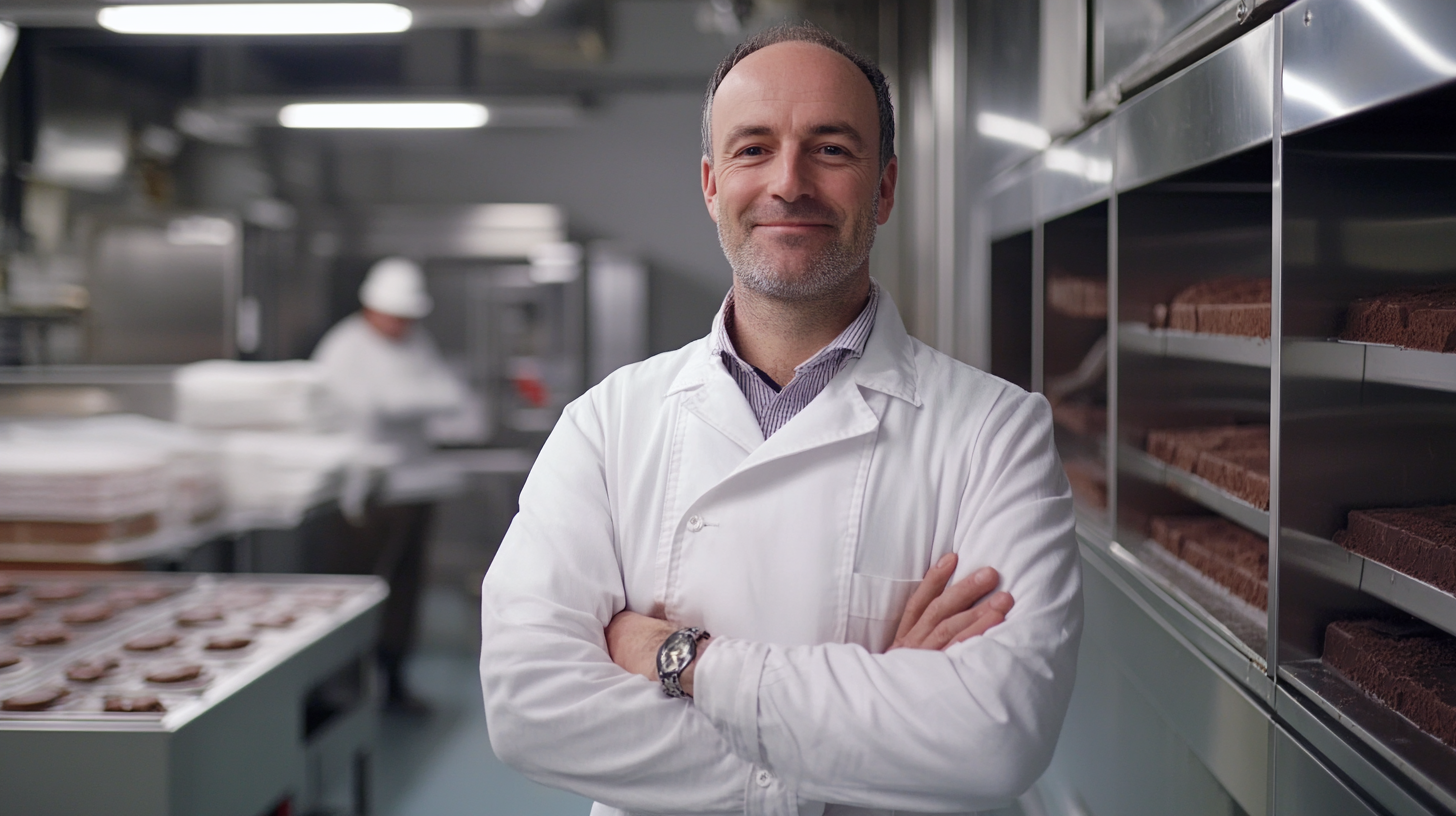In the rapidly growing chocolate industry, the demand for high-quality confections has necessitated advancements in manufacturing techniques, particularly in the area of enrobing. According to a report by Grand View Research, the global chocolate market size was valued at USD 130.59 billion in 2021 and is expected to expand at a compound annual growth rate (CAGR) of 4.6% from 2022 to 2030. As consumer preferences shift toward premium and artisanal chocolates, manufacturers are increasingly investing in sophisticated equipment, such as the Chocolate Enrobing Machine, to enhance product quality and production efficiency.
However, alongside the pursuit of innovation and quality, chocolate manufacturers must navigate a complex landscape of compliance standards and regulations. The International Organization for Standardization (ISO) and various food safety agencies have established rigorous guidelines to ensure that chocolate products meet both safety and quality benchmarks. Adhering to these standards not only safeguards consumer health but also maximizes investment returns in equipment like the Chocolate Enrobing Machine. This blog will explore the critical compliance considerations for manufacturers, helping them make informed decisions while enhancing their production capabilities.

Investing in food machinery, particularly chocolate enrobing machines, demands a keen understanding of compliance standards. These standards are not merely regulatory hurdles; they embody the commitment to food safety and quality that consumers expect. According to a report from the Food and Drug Administration (FDA), foodborne illnesses affect approximately 48 million people in the U.S. annually, highlighting the critical need for stringent compliance measures within food processing equipment. Compliance standards, such as those set forth by both the FDA and the European Union's HACCP (Hazard Analysis Critical Control Point) guidelines, serve as the foundation for safe food production. For instance, the International Organization for Standardization (ISO) indicates that adherence to ISO 22000 helps companies effectively manage their food safety responsibilities. This becomes particularly pertinent for chocolate enrobing machines, which must operate at precise temperatures to ensure that products meet safety regulations while maintaining taste and texture. Moreover, research from the National Confectioners Association suggests that investing in compliant machinery not only mitigates risks associated with regulatory fines but can also enhance marketability. Consumers are increasingly prioritizing safely produced goods, and studies indicate that 70% of consumers would switch brands for better food safety standards. Thus, ensuring your chocolate enrobing machine adheres to compliance standards is not just about following the law; it’s a strategic investment in your brand’s reputation and consumer trust.

When investing in a chocolate enrobing machine, understanding compliance standards is crucial to ensure product quality and safety. Various regulations impact the chocolate production process, particularly the machinery used. The Food and Drug Administration (FDA) sets strict guidelines for food processing equipment, emphasizing sanitary design and construction. According to a report by the National Confectioners Association, nearly 70% of chocolate manufacturers prioritize compliance with FDA standards when selecting machinery, as non-compliance can lead to significant penalties and product recalls.
Another critical compliance standard is the European Union (EU) Regulation (EC) No. 852/2004 on the hygiene of foodstuffs, which mandates that all food-contact surfaces be easily cleanable and constructed from materials that do not pose a risk to food safety. In a recent survey from the Chocolate Manufacturers Association, 80% of respondents reported that meeting EU compliance is essential for accessing international markets. The emphasis on hygiene not only addresses consumer health but also enhances brand reputation in a competitive industry.
Moreover, compliance with energy efficiency standards, such as the Energy Star program, can significantly affect operational costs. According to the U.S. Department of Energy, energy-efficient machines can reduce energy consumption by about 20-30%, providing substantial savings over time. Manufacturers are increasingly seeking equipment that meets these standards, as they not only contribute to sustainability efforts but also offer a return on investment through lower operational expenses. Understanding these compliance standards is essential for chocolate manufacturers aiming to thrive in a highly regulated and competitive market.

When investing in a chocolate enrobing machine, it’s crucial to evaluate the compliance credentials of the manufacturer. The chocolate industry operates under stringent regulations that ensure food safety, quality, and environmental sustainability. An accountable manufacturer should be transparent about their compliance with international standards such as FDA, ISO, and CE certifications. This not only guarantees that the machinery adheres to food safety protocols but also assures that it meets the operational efficiency expected in modern production lines.
Additionally, it’s essential to ask potential manufacturers about their quality assurance practices and any third-party audits they’ve undergone. A reputable manufacturer will provide documentation that showcases their commitment to compliance. Look for detailed records of inspections, certifications, and any endorsements from recognized industry organizations. This information can significantly impact your investment decision, as it helps ensure that the equipment will perform reliably and safely within your production environment.
Finally, consider the manufacturer’s history and reputation within the industry. Research customer testimonials and case studies to see how they’ve navigated compliance issues in the past. A provider with a proven track record in maintaining high compliance standards is more likely to deliver a product that fits your needs and stands the test of time. Investing in a chocolate enrobing machine is not just about the equipment itself; it’s about partnering with a manufacturer who values compliance as much as you do.

Investing in a chocolate enrobing machine is a significant commitment, and ensuring compliance with industry standards is crucial for operational success. However, maintaining compliance post-purchase can be challenging. The first step involves understanding the specific regulations that apply to your equipment, including food safety and hygiene standards mandated by local and international authorities. Regular training for staff on these regulations ensures that everyone is aware of their responsibilities and the importance of compliance in daily operations.
Additionally, implementing a routine maintenance schedule for your enrobing machine is essential. Regular check-ups help not only in keeping the machine in optimal working condition but also in identifying potential compliance issues before they escalate. Documentation of these maintenance activities provides a clear record that can be invaluable during audits. Furthermore, investing in compliance software or consultation services can help streamline adherence to evolving standards, reducing the risk of violations.
Finally, fostering a culture of compliance within your organization encourages proactive behavior among your employees. Regular workshops or refresher courses can emphasize the significance of compliance and keep everyone updated on any changes in regulations. Encouraging open communication about potential issues and solutions promotes teamwork in maintaining a compliant operation, ensuring the longevity and success of your chocolate enrobing machine investment.
As the chocolate industry continues to evolve, navigating the regulatory landscape surrounding equipment like chocolate enrobing machines becomes increasingly critical. Manufacturers must stay abreast of recent changes in compliance standards that directly affect their operations and investment decisions. Understanding the nuances of these regulations ensures that businesses can achieve optimal efficiency without compromising safety or quality.
One major regulatory shift impacting equipment standards is the tightening of food safety regulations. Agencies such as the FDA and local health departments have implemented more stringent requirements for machinery used in food processing, emphasizing hygiene and sanitation. Businesses must ensure that their enrobing machines meet these updated criteria, incorporating materials and designs that facilitate easier cleaning and maintenance. This not only helps in compliance but also enhances product integrity and consumer trust.
Additionally, technological advancements are reshaping compliance requirements. Modern chocolate enrobing machines often come equipped with smart technology, allowing for real-time monitoring and data collection. Adopting these innovations can streamline compliance processes, helping businesses quickly adapt to new regulations and demonstrate adherence through detailed reporting and tracking capabilities. Therefore, investing in machines that offer both cutting-edge technology and compliance-ready features will not only mitigate risk but also position companies favorably in a competitive market.